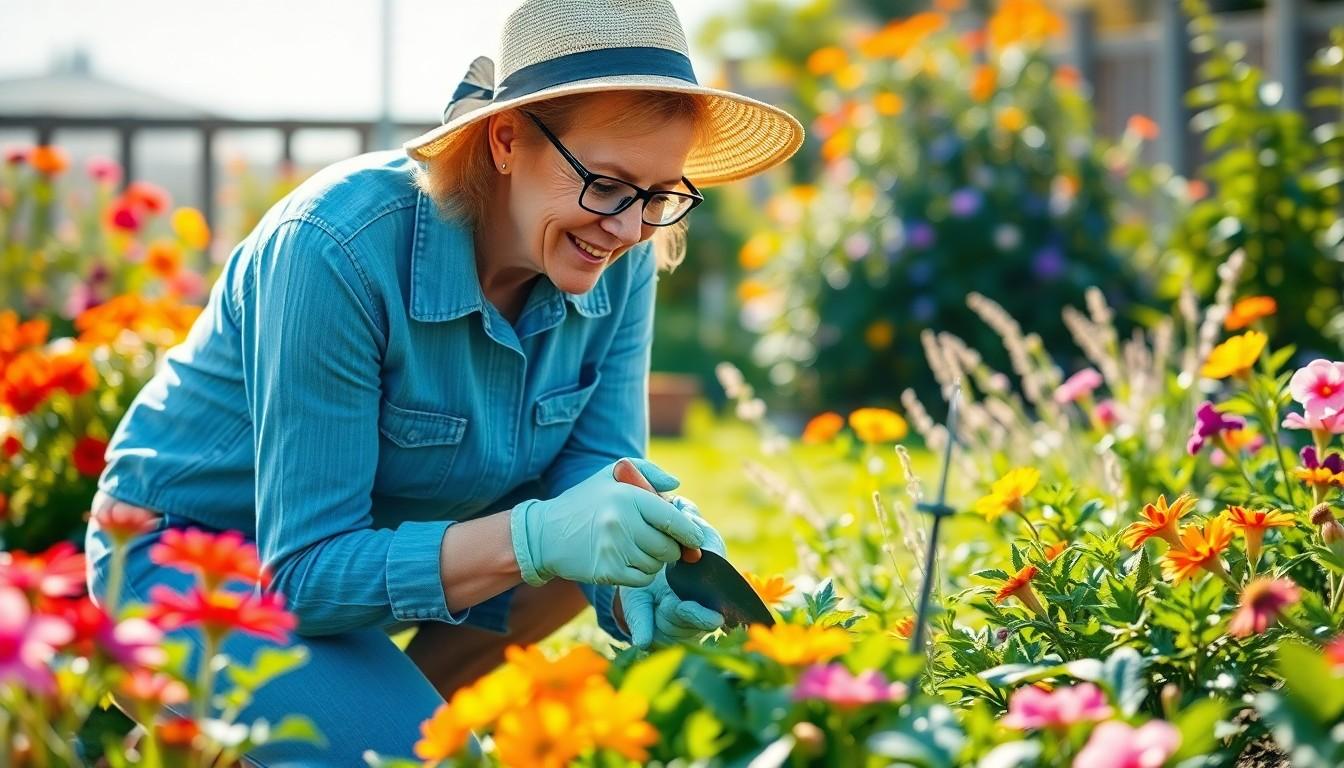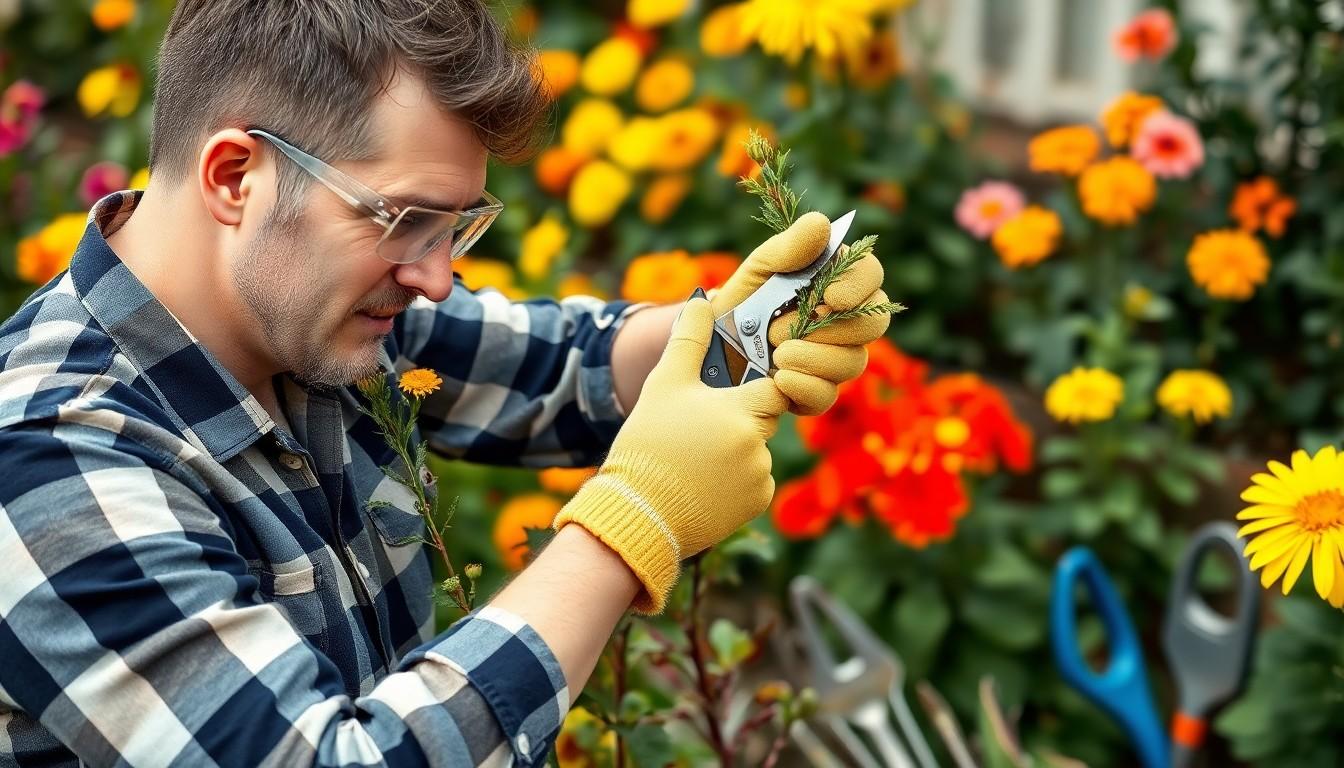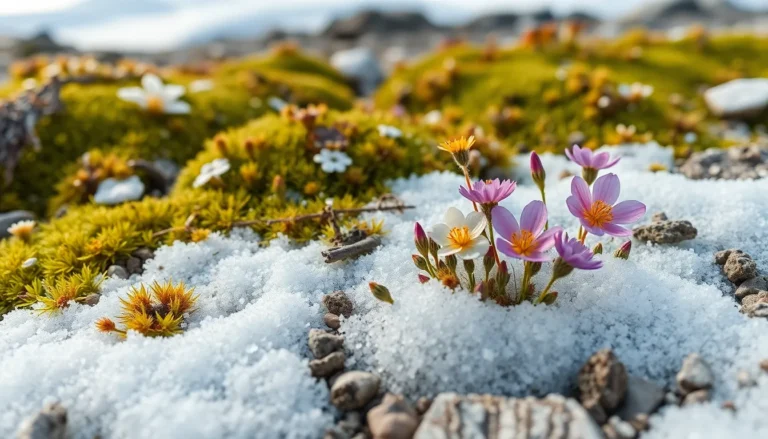
Gardening Safety Tips: Essential Tricks to Keep You Safe and Enjoying the Garden
Gardening can be a delightful escape, but it’s not all sunshine and daisies. With a spade in one hand and a trowel in the other, one wrong move can turn a peaceful day in the garden into a scene straight out of a slapstick comedy. From pesky thorns to slippery tools, safety should always be a top priority.
Gardening Safety Tips
Gardening safety tips promote a safer working environment. The act of gardening often involves tools, chemicals, and the physical demands of bending and lifting. Individuals who take safety measures minimize risks associated with these elements. Awareness of potential hazards helps prevent injuries related to falls, cuts, and exposure to harmful substances.
Proper use of equipment significantly reduces accidents. Wearing appropriate personal protective equipment, such as gloves and safety goggles, protects against injuries. Handling tools with care prevents mishaps, such as punctures or lacerations. Educating oneself about the right techniques for using gardening tools fosters a safer gardening experience.
Knowledge of environmental factors contributes to gardening safety. Weather conditions, such as heat or rain, influence the safety of outdoor work. Staying hydrated and taking breaks during extreme temperatures limits the risk of heat exhaustion. Additionally, knowledge of local wildlife and plants helps prevent allergic reactions or dangerous encounters.
Awareness of chemical usage plays a crucial role in safeguarding health. Fertilizers, pesticides, and herbicides can pose significant risks if mismanaged. Reading labels and following application guidelines ensure safe use. Proper storage of these chemicals also prevents accidental exposure to children and pets.
Participating in safety training can enhance a gardener’s understanding. Workshops and classes provide valuable information on common hazards and their prevention. Engaging with seasoned gardeners offers practical insights into maintaining a safe gardening routine. Regularly reviewing safety protocols keeps gardeners prepared for any situation.
Implementing these tips not only protects the gardener but also promotes a positive gardening experience. Enjoying the beauty of nature while prioritizing safety leads to a more fulfilling and enriching engagement with gardening.
Common Gardening Hazards

Gardening involves various risks that require awareness. Understanding these hazards can significantly enhance safety.
Tools And Equipment Safety
Using gardening tools safely is essential for preventing injuries. Always inspect equipment before use to ensure it’s in good condition. Keeping tools sharp enhances efficiency but also increases the risk of cuts. Store tools in a dry, secure place to avoid accidents. Gardeners must wear appropriate personal protective equipment, such as gloves and safety glasses, to minimize injuries. Furthermore, using power tools necessitates a clear workspace to prevent tripping hazards. Gardener training programs often cover essential tool safety practices, reinforcing the importance of proper usage.
Pest Control Precautions
Taking precautions while using pesticides is vital for safety. Reading labels helps understand proper application methods and safety measures. Wear gloves and masks to protect against inhaling harmful chemicals. Apply pest control products during calm weather to prevent drift and contamination. Avoid working with chemicals close to edible plants to reduce exposure risk. Monitoring personal health after using pesticides can reveal adverse effects promptly. Training sessions on safely handling chemicals can greatly enhance gardeners’ knowledge and confidence.
Health Considerations
Gardening can pose health risks. By recognizing these risks, gardeners can implement safety measures to protect themselves during their outdoor activities.
Sun Protection Strategies
Sun exposure can lead to skin damage. Wearing sunscreen with an SPF of at least 30 offers essential protection. Choosing wide-brimmed hats shields the face and neck, while long-sleeved shirts guard against harmful rays. Sunglasses with UV protection also protect the eyes. Seeking shade during peak hours between 10 AM and 4 PM minimizes direct sun exposure. Regularly checking the UV index helps plan safer gardening sessions.
Hydration Tips
Staying hydrated is crucial while gardening. Drinking water before beginning work prevents dehydration. Aim for at least 8 ounces of water every hour while gardening to maintain hydration levels. Keeping a water bottle nearby encourages regular sips throughout the activity. Be mindful of signs of dehydration, such as dizziness or excessive thirst. Incorporating hydrating fruits like watermelon or cucumbers into snacks can also promote hydration.
Best Practices For Safe Gardening
Gardening safety practices enhance the overall experience while minimizing risks. Following these guidelines ensures a safer environment for all gardening activities.
Proper Lifting Techniques
Using correct lifting techniques is vital for preventing injuries. Always bend at the knees, not the waist, to maintain proper posture. Keeping the load close to the body reduces strain on the back. When lifting heavy items, such as soil bags or large pots, using both hands provides better control. If an object seems too heavy, asking for help is a smart choice. Avoid twisting the body while lifting; instead, pivot your feet to change direction. Additionally, break down larger loads into smaller, manageable portions to reduce the risk of injury.
Wearing Protective Gear
Wearing protective gear is essential for safe gardening practices. Gardeners should use gloves to protect against cuts, thorns, and chemicals. Safety goggles prevent debris and chemicals from entering the eyes during work. Long-sleeved shirts and sturdy pants guard against abrasions and insect bites. Footwear with closed toes offers additional protection from sharp tools and heavy objects. In cases of using pesticides or fertilizers, a mask provides respiratory protection. Choosing appropriate gear based on the specific gardening task enhances safety and comfort.
Gardening can be a rewarding experience when safety is prioritized. By adopting the right precautions and being mindful of potential hazards, gardeners can significantly reduce risks while enjoying their time outdoors.
Emphasizing the use of personal protective equipment and safe handling of tools and chemicals ensures a safer environment. Staying informed about health considerations and environmental factors further enhances the gardening experience.
Ultimately, a commitment to safety not only protects individuals but also fosters a more enjoyable and productive gardening journey. With these practices in place, anyone can cultivate their garden with confidence and peace of mind.



